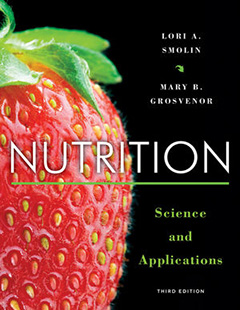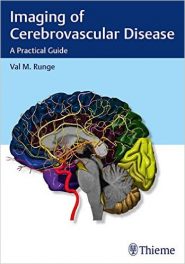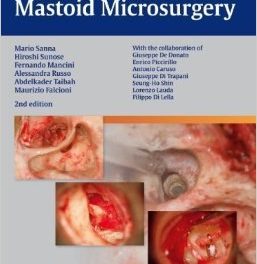 Authors: Lori A. Smolin and Mary B. Grosvenor
Authors: Lori A. Smolin and Mary B. Grosvenor
Publisher: Wiley – 759 pages
Book Review by: Nano Khilnani
This book is for consumers, health professionals and future scientists. It helps you use the logic of science in making the right decisions on creating your own diet.
If you are a health professional (physician, nurse, nutritionist, dietitian or in related fields) this book can be a very valuable resource to you to help your patients or clients decide not only what (and what not) to eat frequently or occasionally, but also create their entire diets and meal plans.
“You are what you eat” is a truism and the food we consume (or avoid) determines the level of our health and the quality of our lives. To be disease-free, live a long, energetic -and healthy life, good nutrition is an absolute requirement.
This large, hardbound volume containing essential information on the nutritional components of thousands of foods should be an important part of anyone’s library. It can serve as an essential reference source for anyone working in any profession related to nutrition.
Nutrition: Science and Applications is a working textbook for introductory nutrition courses at numerous universities in the United States and abroad. This book provides an immense amount of information as well as the scientific basis for any decision relating to the need for any type (or group) of nutrients to improve one’s health.
Among the important theses that this book provides scientific support for, are:
- Critical thinking enhances problem-solving skills
- Integrated metabolism reinforces understanding
- Integration of health and disease relationships holds interest
- The total diet, not individual foods, is the focus
This book has a combination of features that make learning easy and fun. Some of those features in each of its 18 chapters are:
- Chapter Outline – an overview of the major topics presented in the chapter
- Case Study – provides a real-life example or examples relating to one or several of the concepts covered in the chapter
- Outcome – completes the case study story at end of the chapter what was introduced in the beginning.
- Learning Objectives – presented at the beginning, the objective indicates what the student must be able to demonstrate mastery of, at the end of each chapter
- Critical-Thinking Exercises – help students make decisions and solve problems
- Off the Label – presents in-depth information on food, supplements, drugs
- Science Applied – features research studies key to our current knowledge
- Debate – explores a controversial nutrition issue and presents all sides of it
- Process Diagrams – illustrations that help students understand the material
- Applications – focuses on the student’s personal diet and nutritional concerns
- Chapter Summary – highlights important concepts addressed in the chapter
- Review Questions – test the student’s understanding of key points covered.
Here is an overview of the subjects covered in the 18 chapters of this book. The first five chapters are on:
- Nutrition: Food for Health
- Nutrition Guidelines: Applying the Science of Nutrition
- Digestion, Absorption, and Metabolism
- Carbohydrates, Sugars, Starches, and Fiber
- Lipids: Triglycerides, Phospolipids, and Cholesterol
Then, there are two chapters each under a Focus on Alcohol and Eating Disorders; three chapters under a Focus on Phytochemicals; five chapters under a Focus on Nonvitamin / Nonmineral Supplements; one chapter with a Focus on Technology; and finally, a chapter on World Hunger and Malnutrition.
This is an excellent book on nutrition – comprehensive, well planned and laid out, and written in clear, easy-to-understand language. It is also well illustrated, with a variety of full-color images and art that helps students more easily understand and absorb the material presented. The authors – Lori A. Smolin and Mary B. Grosvenor – have done an outstanding job.
Lori A. Smolin is at the University of Connecticut, where she has taught both in the Department of Nutritional Science and in the Department of Molecular and Cell Biology. Courses she has taught include introductory nutrition, life cycle nutrition, food preparation, nutritional biochemistry, general biochemistry, and introductory biology.
Mary B. Grosvenor, a registered dietitian who holds a master of science in nutrition degree, teaches at the community college level and has published articles in peer-reviewed journals in nutritional assessment and nutrition and cancer. Her experience provides practical insights on the application and presentation of the science in this text.







